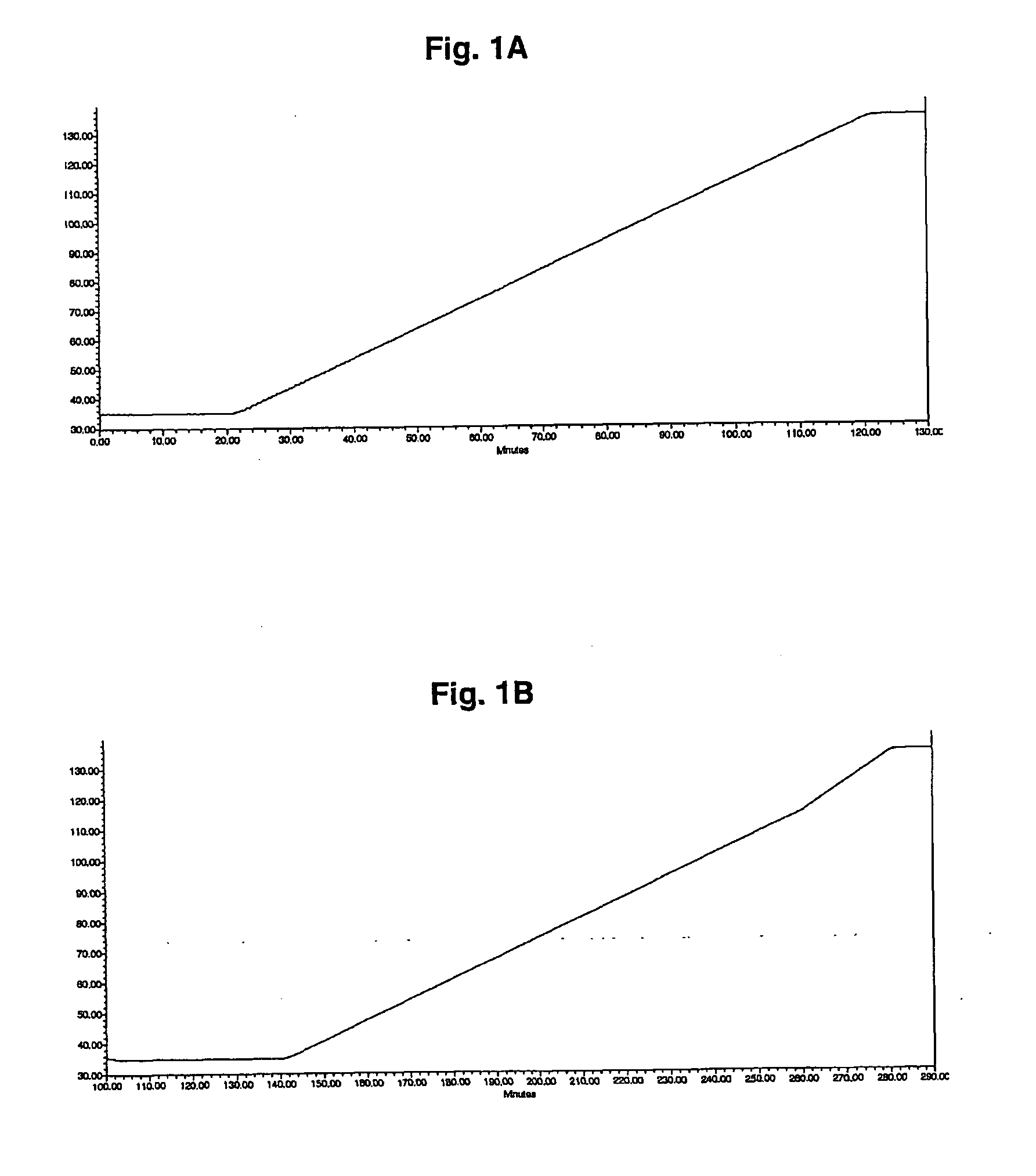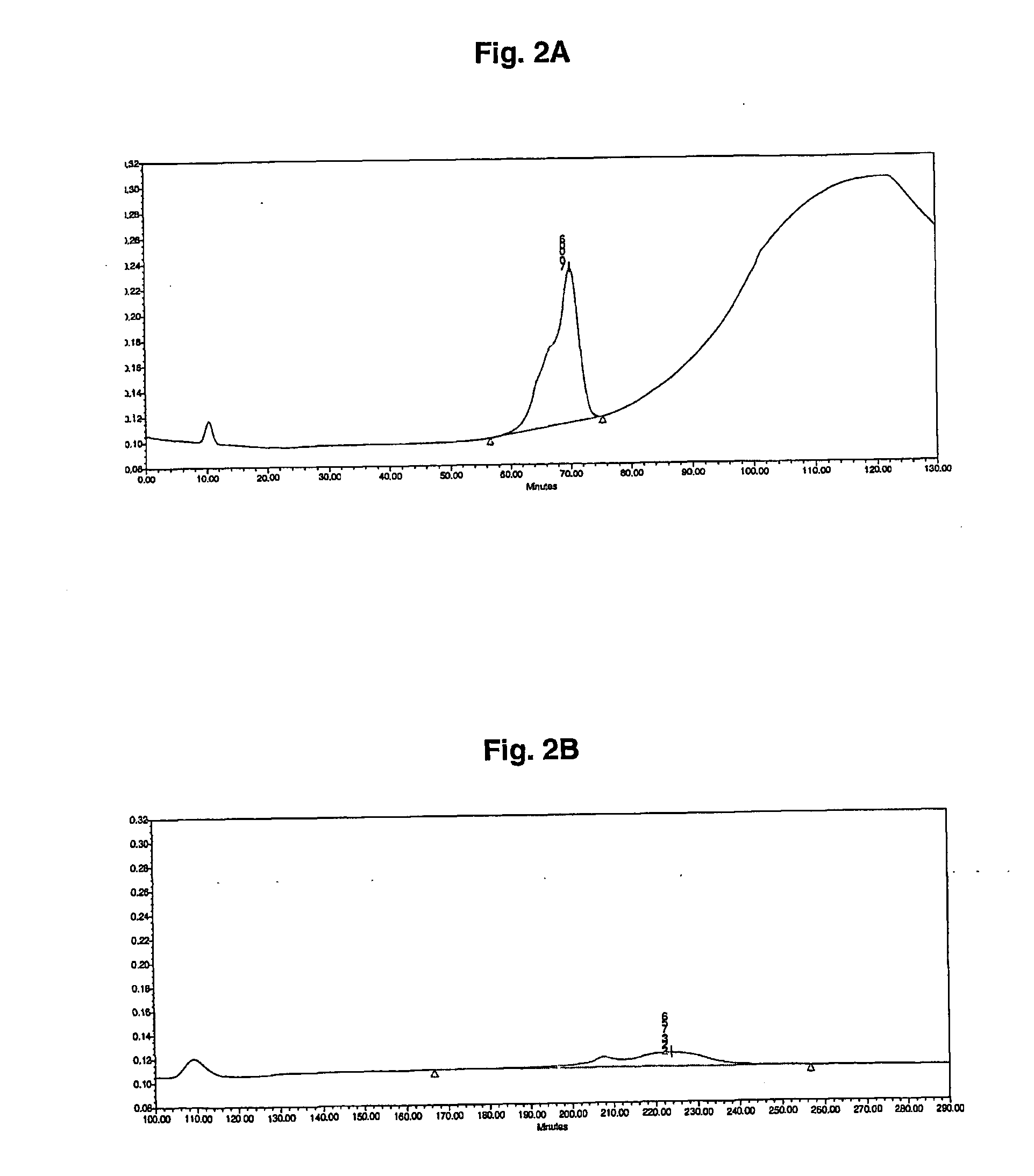Column for analytical temperature rising elution fractionation (atref)
a technology of elution fraction and column, which is applied in the field of column for performing analytical temperature rising elution fraction (atref), can solve the problems of high cost, poor sensitivity of type of detector, and large amount of polymer, and achieve the effect of avoiding variation, and improving the baseline stability of the detector
- Summary
- Abstract
- Description
- Claims
- Application Information
AI Technical Summary
Benefits of technology
Problems solved by technology
Method used
Image
Examples
example 1
ATREF Analysis of a Standard Polyethylene Sample
[0063] To illustrate the improvements determined by the column according to the invention a low density standard polyethylene (LDPE) provided by National Bureau of Standards (NBS 1476 branched polyethylene) was analysed in an ATREF analysis using a column according to the invention. The column consisted of a stainless steel column having 0.8 cm in diameter and 25 cm in length filled with elastic wires. The wires are made of stainless steel having a diameter of 0.1 mm and an average length of 10 mm. The LDPE sample was injected at a concentration of 3.2 mg / ml. For comparison, the same sample was analysed in an ATREF analysis using a traditional column, being a stainless steel column with 0.39 cm internal diameter and 15 cm in length and packed with small aluminium oxide particles having a 70-230 mesh-size. The LDPE sample was injected at a concentration of 6.3 mg / ml. As detector for ATREF, a built in differential refractive index (DRI)...
example 2
ATREF Analysis of a Polypropylene Sample
[0067] This example compares the analysis of a highly isotactic polypropylene (PP) sample, having an average tacticity of 98.7% and a weight average molecular weight of 460 kg / mol, when using a 0.8×25 cm stainless steel column packed with elastic wires or when using a traditional column. The 0.8×25 cm column is packed with elastic wires consisting of stainless steel wires having a diameter of 0.1 mm and an average length of 10 mm. The traditional column consists of a stainless steel column with 0.39 cm internal diameter and 15 cm in length and packed with small aluminium oxide particles having a 70-230 mesh-size. The PP sample was injected in the column packed with elastic wires at a concentration of 1.8 mg / ml. The PP sample was injected in the column packed with Al2O3 at a concentration of 5 mg / ml. As detector for ATREF, a built in differential refractive index (DRI) detector of a Waters GPC 150CV system is used.
[0068]FIG. 4A represents the...
PUM
| Property | Measurement | Unit |
|---|---|---|
| thermal conductivity | aaaaa | aaaaa |
| diameter | aaaaa | aaaaa |
| diameter | aaaaa | aaaaa |
Abstract
Description
Claims
Application Information
 Login to View More
Login to View More - R&D
- Intellectual Property
- Life Sciences
- Materials
- Tech Scout
- Unparalleled Data Quality
- Higher Quality Content
- 60% Fewer Hallucinations
Browse by: Latest US Patents, China's latest patents, Technical Efficacy Thesaurus, Application Domain, Technology Topic, Popular Technical Reports.
© 2025 PatSnap. All rights reserved.Legal|Privacy policy|Modern Slavery Act Transparency Statement|Sitemap|About US| Contact US: help@patsnap.com



